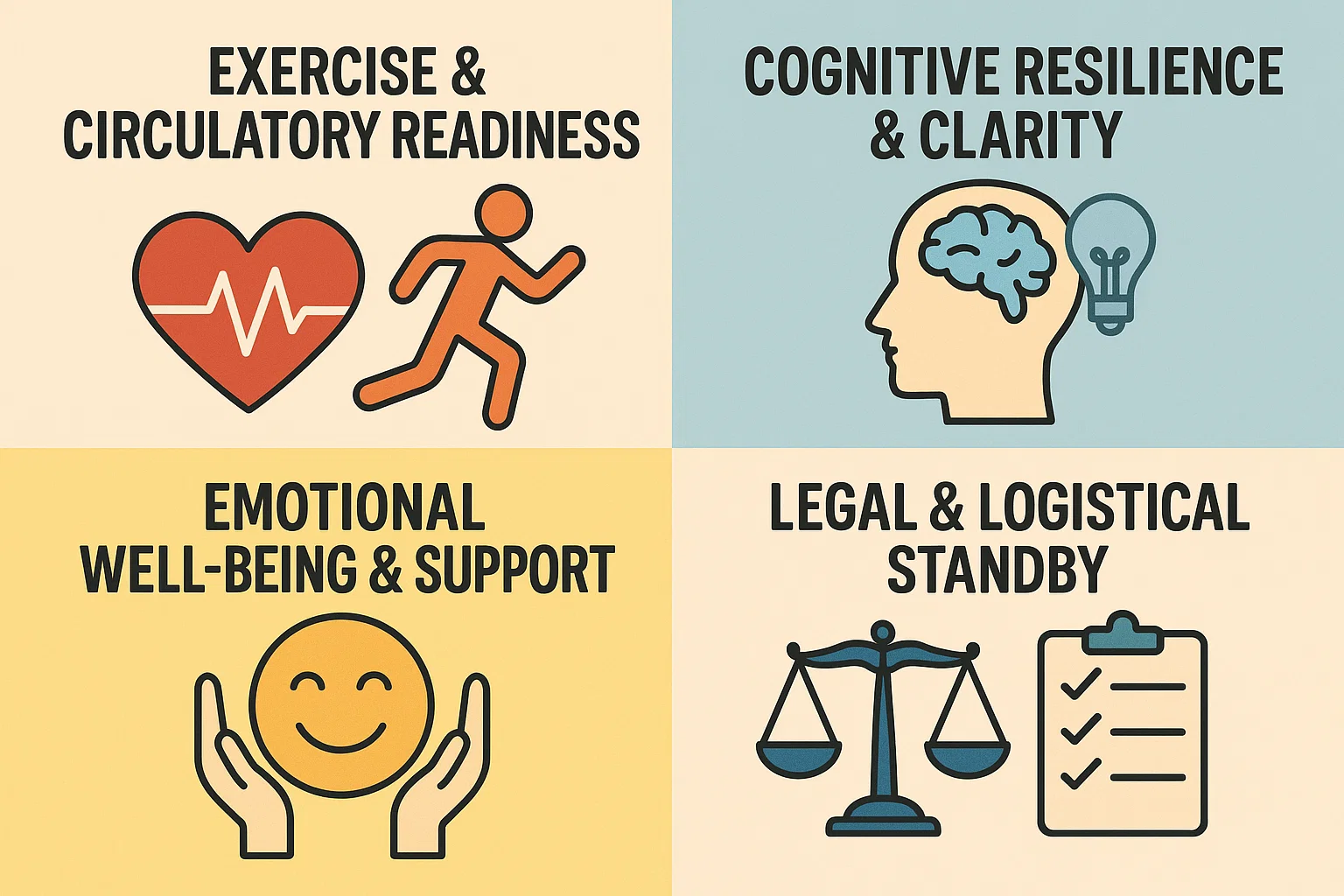Nutrition & Cellular Integrity
As preservation science moves from the realm of speculation into verified laboratory and clinical practice, cryopreservation is rapidly emerging as a tangible strategy for “pausing” life until future therapies catch up. However, the success of that pause hinges entirely on the health of tissues at the moment they enter low-temperature storage. Cells already compromised by oxidative stress, inflammation or poor vascular function are far more prone to damage during perfusion and cooling, resulting in ice-induced fractures or uneven cryoprotectant diffusion.
By contrast, individuals who adopt evidence-based healthy aging measures, antioxidant-rich nutrition, aerobic and resistance training to maintain capillary density, and rigorous stress management, present organs and cells in their most robust state. This stronger starting point minimizes biophysical stresses during vitrification at –196 °C, preserves ultrastructural integrity, and ultimately sets the stage for more uniform, high-quality cryostorage and a better chance that future revival technologies will have intact, functional tissue to work with.

Decades of research show that diet profoundly influences cell structure and function. Diets rich in antioxidants, healthy fats and phytonutrients reduce oxidative damage and inflammation, two drivers of decay. For instance, adopting a plant-forward approach akin to the centenarian diets of Okinawa, and ensuring ample intake of omega-3s and polyphenols can bolster membrane stability.
Moreover, strategies that help preserve telomeres, the protective caps on chromosome ends, play a crucial role. Lifestyle factors such as whole-food diets, stress reduction and adequate sleep have been linked to slower telomere shortening. By focusing on nutrient timing and quality today, you support DNA integrity, directly benefiting downstream preservation efforts.
Exercise & circulatory readiness
Maintaining robust circulation ensures tissues receive oxygen and nutrients efficiently, a factor that influences how well cells endure standby and perfusion phases in cryopreservation. Regular aerobic activity, from brisk walking to cycling, promotes capillary density and endothelial health. Strength training adds value by preserving muscle mass and mitochondrial function, which in turn reduces reactive oxygen species at the cellular level. In order for staying strong in body and mind, we explore how consistent physical activity underpins independence and resilience in later years.
Cognitive resilience & clarity
Neural tissue is among the most delicate to preserve. Cognitive stimulation, such as learning new skills, social engagement or brain-targeted practices like meditation, upregulates brain-derived neurotrophic factor (BDNF) and enhances synaptic plasticity. These benefits may reduce baseline neuronal damage and protein aggregation, yielding cleaner neural architecture at the moment of cryoprotectant perfusion.
In order to prevent cognitive decline and maintain mental sharpness, sleep hygiene, stress management and purposeful mental challenges should be prioritized, you create a neural environment better suited to surviving extreme cooling and eventual revival attempts.
Emotional well-being & support
Facing mortality, whether one’s own or a loved one’s, can trigger profound anxiety. Establishing robust emotional support systems, including counseling or peer groups, lessens chronic stress and its downstream hormonal impacts on tissue health. Chronic cortisol elevation impairs immune function and accelerates cellular aging, undermining both daily vitality and cryopreservation readiness.
Compassionate communication and advance planning also reduce decision-making stress when time is critical. Tools like advance directives ensure your freeze-standby is executed swiftly and smoothly, minimizing delays that can compromise preservation quality.
Legal & logistical standby
Even with optimal body and mind health, logistics matter. Securing membership with a reputable cryonic provider ensures immediate activation of standby protocols upon legal death confirmation. During standby, maintaining circulation and preventing ischemia are vital. By pairing these logistical preparations with your healthy aging groundwork, you maximize both immediate stabilization and long-term tissue viability.
Preparing for cryopreservation is not merely an engineering challenge, it’s a holistic endeavor that begins well before the moment of clinical death. By integrating healthy aging practices, nutrient-dense diets, targeted exercise, cognitive engagement and emotional support, you enhance cellular and neural resilience. These foundations translate directly into higher-quality preservation, offering the best possible chance for future medical innovations to succeed.
Remember, cryopreservation is not a cure but an opportunity to extend hope until science catches up. We understand how difficult a diagnosis can be and are here to answer every question with empathy and clarity.
About Tomorrow.bio
At Tomorrow.bio we are dedicated to advancing the science of cryopreservation with the goal of giving people a second chance at life As Europe’s leading human cryopreservation provider we focus on rapid high-quality standby, stabilization and storage of terminal patients preserving them until future technologies may allow revival and treatment.
Our mission is to make human cryopreservation a reliable and accessible option for everyone We believe that no life should end because current capabilities fall short.
Our vision is a future where death is optional where people have the freedom to choose long-term preservation in the face of terminal illness or fatal injury and to awaken when science has caught upInterested in learning more or becoming a member
📧 Contact us at hello@tomorrow.bio
🌐 Visit our website www.tomorrow.bio
🤝 Schedule a call with our team Book a consultation



